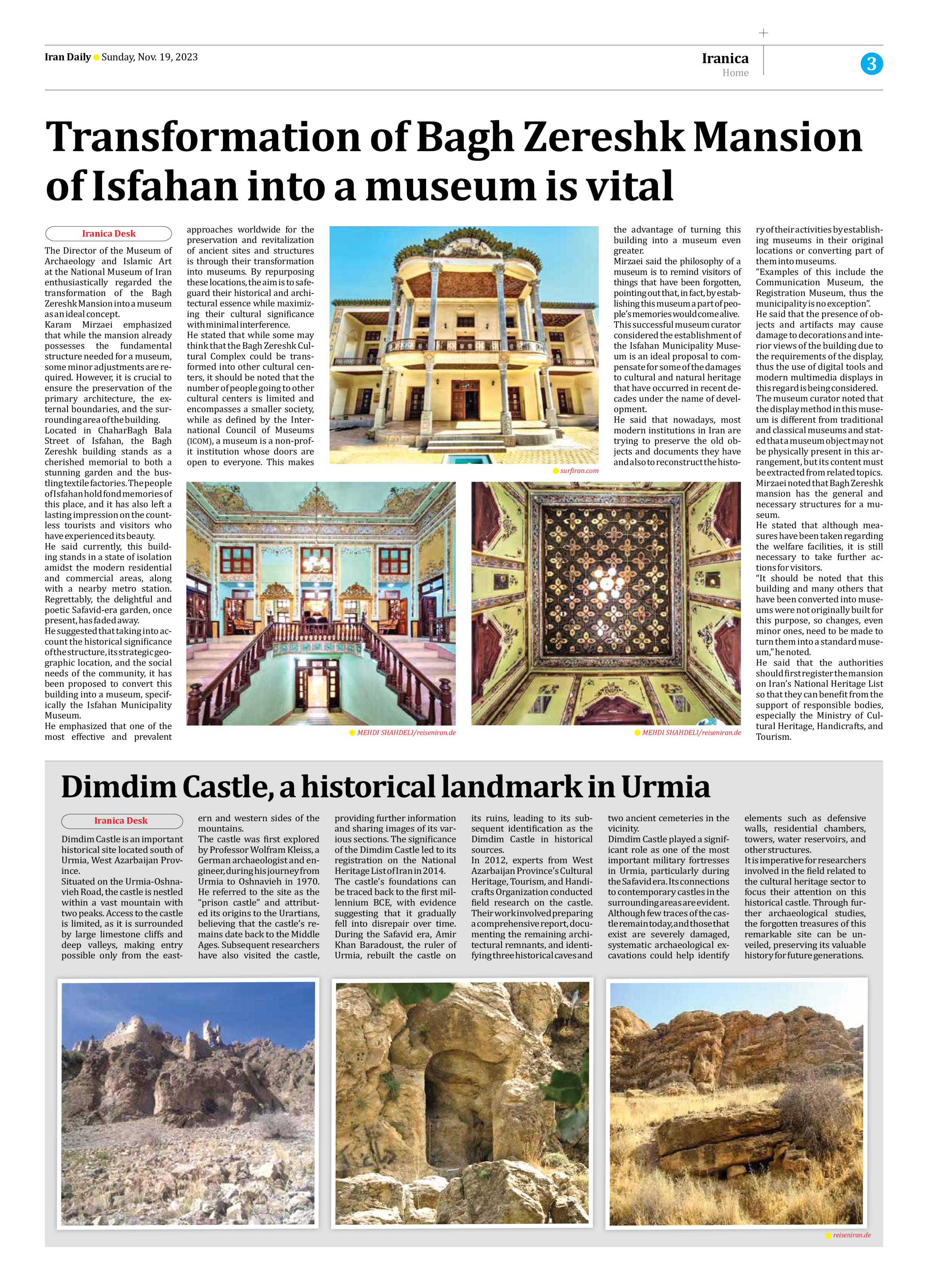
Transformation of Bagh Zereshk Mansion of Isfahan into a museum is vital
The Director of the Museum of Archaeology and Islamic Art at the National Museum of Iran enthusiastically regarded the transformation of the Bagh Zereshk Mansion into a museum as an ideal concept.
Karam Mirzaei emphasized that while the mansion already possesses the fundamental structure needed for a museum, some minor adjustments are required. However, it is crucial to ensure the preservation of the primary architecture, the external boundaries, and the surrounding area of the building.
Located in ChaharBagh Bala Street of Isfahan, the Bagh Zereshk building stands as a cherished memorial to both a stunning garden and the bustling textile factories. The people of Isfahan hold fond memories of this place, and it has also left a lasting impression on the countless tourists and visitors who have experienced its beauty.
He said currently, this building stands in a state of isolation amidst the modern residential and commercial areas, along with a nearby metro station. Regrettably, the delightful and poetic Safavid-era garden, once present, has faded away.
He suggested that taking into account the historical significance of the structure, its strategic geographic location, and the social needs of the community, it has been proposed to convert this building into a museum, specifically the Isfahan Municipality Museum.
He emphasized that one of the most effective and prevalent approaches worldwide for the preservation and revitalization of ancient sites and structures is through their transformation into museums. By repurposing these locations, the aim is to safeguard their historical and architectural essence while maximizing their cultural significance with minimal interference.
He stated that while some may think that the Bagh Zereshk Cultural Complex could be transformed into other cultural centers, it should be noted that the number of people going to other cultural centers is limited and encompasses a smaller society, while as defined by the International Council of Museums (ICOM), a museum is a non-profit institution whose doors are open to everyone. This makes the advantage of turning this building into a museum even greater.
Mirzaei said the philosophy of a museum is to remind visitors of things that have been forgotten, pointing out that, in fact, by establishing this museum a part of people’s memories would come alive.
This successful museum curator considered the establishment of the Isfahan Municipality Museum is an ideal proposal to compensate for some of the damages to cultural and natural heritage that have occurred in recent decades under the name of development.
He said that nowadays, most modern institutions in Iran are trying to preserve the old objects and documents they have and also to reconstruct the history of their activities by establishing museums in their original locations or converting part of them into museums.
“Examples of this include the Communication Museum, the Registration Museum, thus the municipality is no exception”.
He said that the presence of objects and artifacts may cause damage to decorations and interior views of the building due to the requirements of the display, thus the use of digital tools and modern multimedia displays in this regard is being considered.
The museum curator noted that the display method in this museum is different from traditional and classical museums and stated that a museum object may not be physically present in this arrangement, but its content must be extracted from related topics.
Mirzaei noted that Bagh Zereshk mansion has the general and necessary structures for a museum.
He stated that although measures have been taken regarding the welfare facilities, it is still necessary to take further actions for visitors.
“It should be noted that this building and many others that have been converted into museums were not originally built for this purpose, so changes, even minor ones, need to be made to turn them into a standard museum,” he noted.
He said that the authorities should first register the mansion on Iran’s National Heritage List so that they can benefit from the support of responsible bodies, especially the Ministry of Cultural Heritage, Handicrafts, and Tourism.







